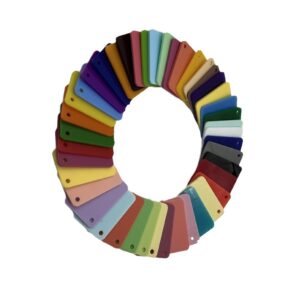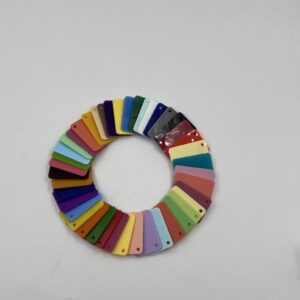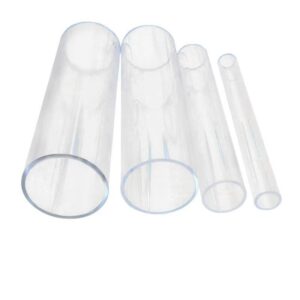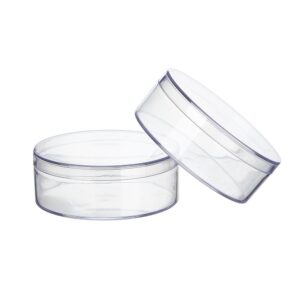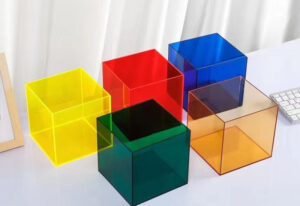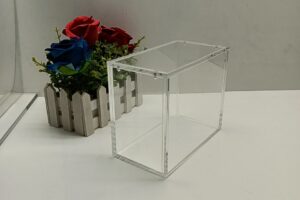Summary
Acrylic retail fixture design has emerged as a significant aspect of modern retail environments, shaped by evolving consumer preferences and technological advancements. These fixtures, known for their versatility and aesthetic appeal, are increasingly utilized across various industries, including fashion, jewelry, and food service. Notable for their transparency and sleek lines, acrylic displays not only enhance product visibility but also foster engaging shopping experiences that resonate with today’s eco-conscious consumers and their desire for unique in-store interactions.
Table of Contents
The growing emphasis on sustainability has been a driving force behind the evolution of acrylic fixtures, with retailers prioritizing eco-friendly materials and practices to align with consumer values. This trend is accompanied by a movement towards minimalism and customization, allowing brands to create tailored displays that reflect their identity while maintaining a clean and organized shopping environment. Color theory also plays a pivotal role in fixture design, as retailers strategically employ hues to influence shopper behavior and enhance the overall atmosphere of their stores.
Despite the benefits, the market for acrylic retail fixtures is not without its challenges. Retailers face difficulties in measuring return on investment for display implementations and navigating compliance with varying regulations. Additionally, supply chain disruptions and maintenance concerns can impact the durability and effectiveness of acrylic solutions, necessitating strategic planning and investment in quality materials.
As the retail landscape continues to transform, acrylic fixture design is poised for further evolution, driven by ongoing technological integration and a commitment to creating inclusive, engaging retail spaces. The future of these fixtures will likely reflect an increasing focus on customer experience, sustainability, and adaptability to the ever-changing demands of the market.

Historical Context
The evolution of retail fixtures is deeply rooted in the broader history of commerce and consumer behavior. The practice of trading and selling goods dates back to ancient civilizations, with evidence of bartering as far back as 9000 BC when people exchanged livestock. By 800 BC, ancient Greece had established markets known as the Agora, where merchants showcased their goods, setting the stage for modern retail spaces.
As society progressed, particularly in the late 19th and early 20th centuries, the landscape of retail underwent significant transformation. The shift from an agrarian economy to one dominated by manufacturing and industry brought about new consumer behaviors and expectations. This period saw the rise of department stores such as Macy’s, Bloomingdale’s, and Sears, which not only sold products but also provided customers with demonstrations and entertainment, influencing shopping culture and consumer spending habits.
The post-war era marked another pivotal change, with the expansion of suburban shopping centers and the introduction of self-service models. This led to the development of retail fixtures that catered to the need for efficiency and accessibility, reshaping how products were displayed and sold. As consumer preferences shifted towards convenience, fixtures evolved to create more organized and inviting shopping environments.
In recent decades, the rise of e-commerce has further impacted retail fixture design. Brands are now focusing on creating multi-channel strategies that integrate online and offline experiences, pushing retailers to innovate their physical spaces to enhance customer engagement and loyalty. The growing emphasis on sustainability and eco-friendly materials in fixture design reflects a shift in consumer awareness, urging retailers to align their offerings with the values of modern shoppers.
Today, the retail fixtures market continues to evolve, influenced by technological advancements and changing consumer demands. The incorporation of interactive fixtures and the emphasis on unique in-store experiences highlight the ongoing adaptation of retail environments to meet contemporary expectations and drive sales.
Current Design Trends
Acrylic retail fixtures have become a pivotal element in modern retail design, reflecting various current trends that enhance consumer engagement and brand identity.
Sustainability and Eco-Friendliness
One of the most significant trends in retail display design is the shift towards sustainability. As consumers increasingly prioritize eco-consciousness, retailers are opting for sustainable materials, including reclaimed wood and recycled acrylics. This movement not only reduces environmental impact but also aligns the brand with the values of today’s conscientious shoppers, showcasing a commitment to quality and responsible practices.
Minimalism and Transparency
Minimalism continues to influence retail design, with acrylic fixtures leading the charge. The transparent and clean lines of acrylic create an understated aesthetic, allowing products to take center stage. Retailers are embracing this trend by using sleek acrylic display counters and cases, which help maintain a clutter-free environment and facilitate a focus on the merchandise itself. The trend is particularly prominent in industries such as fashion and jewelry, where product visibility is paramount.
Customization and Versatility
Customization is another prevailing trend in acrylic fixture design. Retailers are looking for ways to tailor displays to perfectly suit their products and brand identity. This includes options for custom sizes, colors, and finishes, which allow retailers to create cohesive visual identities that resonate with shoppers. The ability to produce acrylic displays in various shades and styles enhances their versatility, enabling businesses to reinforce brand connections effectively.
Color Theory in Retail Displays
Color plays a crucial role in retail design, influencing shopper behavior and emotions. Warm colors, such as reds and oranges, can create excitement and urgency, making them ideal for impulse purchases. Conversely, cool colors, like blues and greens, promote calmness and trust, encouraging longer browsing times. Retailers are utilizing colored acrylic sheets not only to attract attention but also to enhance the overall shopping experience through strategic color application.
Integration of Technology
The integration of digital signage with acrylic displays is also gaining traction. This combination allows for dynamic communication of brand messages, promotions, and wayfinding within stores. The adaptability of acrylic makes it suitable for unique designs that integrate technology seamlessly, providing an engaging shopping experience that aligns with modern consumer expectations.
Natural and Organic Shapes
Moving away from rigid designs, retailers are increasingly favoring organic shapes and soft lines in their displays. This trend evokes a connection to nature and promotes a welcoming atmosphere in retail spaces. The use of lightweight, bendable materials allows for the creation of forms that reflect these natural inspirations, enhancing both aesthetic appeal and functionality.

Functionality and Usability
The functionality and usability of acrylic retail fixtures are pivotal in enhancing customer experiences and driving sales. Acrylic materials are known for their ease of fabrication, allowing for a variety of display options, such as brochure holders, cases, picture frames, and racks. This versatility enables retailers to present their products in a way that maximizes visibility and engagement, crucial for effective merchandising.
Space Optimization
Acrylic displays can be customized to fit various retail environments, allowing for efficient use of space without contributing to clutter or overcrowding. Their adaptable design ensures that products are organized effectively, regardless of the store size. Display tables, for instance, provide open, flat surfaces that allow customers to view products from multiple angles, enhancing product appeal and encouraging interaction.
Accessibility
Creating accessible displays is essential for accommodating all customers, including those with disabilities. Effective displays must consider height, reach, and readability to avoid barriers to purchase. Displays that prominently feature crucial product information, such as pricing and features, are necessary to reduce missed sales opportunities and improve overall customer satisfaction.
Aesthetic Integration
The incorporation of visually appealing elements is another critical factor in functionality and usability. By integrating organic shapes and materials like fabric or reclaimed wood, retailers can create an inviting atmosphere that aligns with their brand values while enhancing the shopping experience. This blend of aesthetics with practicality not only captivates customers but also strengthens brand identity, encouraging repeat visits and higher spending.
Technological Enhancements
Furthermore, advancements in technology allow for interactive displays, enhancing usability and engagement. The integration of digital screens, LED lights, and interactive components within acrylic displays creates immersive environments that can significantly elevate the retail experience. As customers increasingly seek unique and engaging shopping experiences, the functionality of acrylic fixtures must evolve to incorporate these technological innovations.
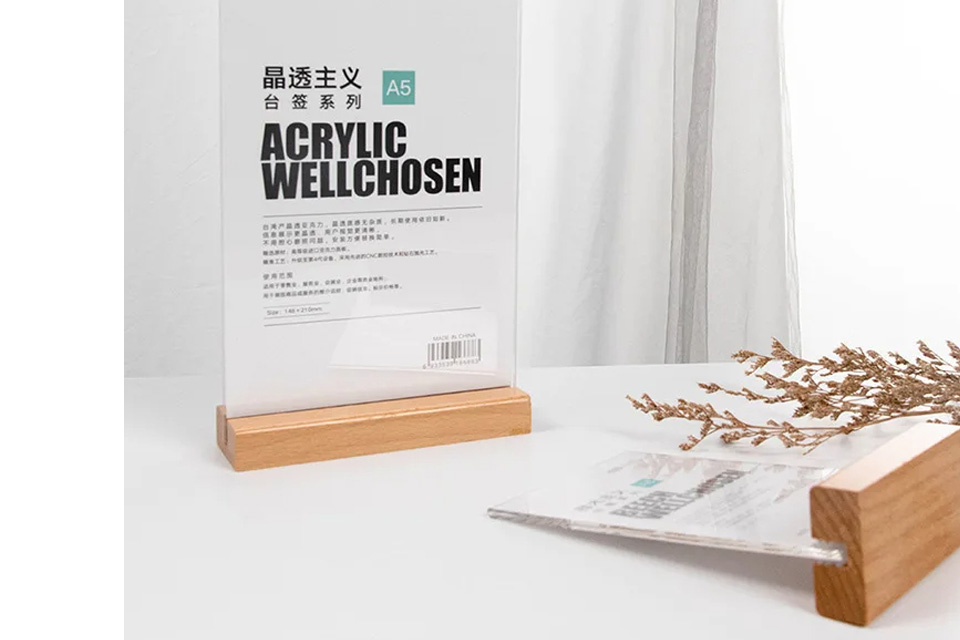
Market Influences
Consumer Awareness and Sustainability
Consumers are increasingly aware of the environmental impact of their purchases, leading to a rising demand for sustainable options in retail settings. Retailers are responding by prioritizing eco-friendly fixtures, which not only attract and retain customers but also align with their values. This shift in consumer expectations is influencing retail display trends and the overall future of retail design, prompting manufacturers to innovate and offer greener solutions. Sustainable practices such as using recycled materials, reducing waste in manufacturing, and designing durable fixtures are becoming essential for retailers looking to meet their sustainability goals. The trend suggests that investing in companies committed to these practices can be both profitable and socially responsible.
Competitive Landscape
The competitive landscape of the shop fixture market is shaped by a mix of global giants and niche specialists who compete on design innovation, material quality, and geographic reach. The market is dynamic, with larger players often benefiting from economies of scale, while smaller, agile companies can carve out niches through superior customer service or tailored solutions. Key market players include Appvion, Inc., Jacobs Construction Ltd., and SURTECO GmbH, which illustrate the diversity of the industry. Additionally, strategic partnerships between manufacturers and retailers, as well as collaborations with technology providers, are increasingly important for expanding capabilities and accessing new markets.
Economic and Regulatory Factors
In Europe, the shop fixture market faces unique challenges, including economic uncertainties and regulatory complexities. These factors can hinder growth, as retailers become cautious about their investments. There is a particular demand for shop fixtures that are durable and adaptable to meet evolving market conditions. The European market is also witnessing a rise in demand for sustainable fixtures, driven by stricter environmental regulations and heightened consumer awareness. This creates both challenges and opportunities for manufacturers who must adapt their products and processes accordingly.
Technological Integration
The rise of e-commerce is reshaping the role of physical retail spaces, transforming them into showrooms and customer service hubs rather than mere points of sale. As consumers increasingly expect a blend of online and in-store shopping experiences, retailers are focusing on creating immersive environments that emphasize personalization and customer engagement. This shift underscores the importance of integrating technology into retail fixtures, enabling stores to enhance customer experiences and compete with online offerings.
Emerging Markets
The Asia-Pacific region is witnessing rapid growth in the shop fixture market, driven by urbanization and rising disposable incomes. As the demand for retail spaces increases, so does the need for shop fixtures that accommodate modern retail formats. Manufacturers and suppliers are presented with significant opportunities, particularly those offering cost-effective and scalable solutions tailored to this expanding market.
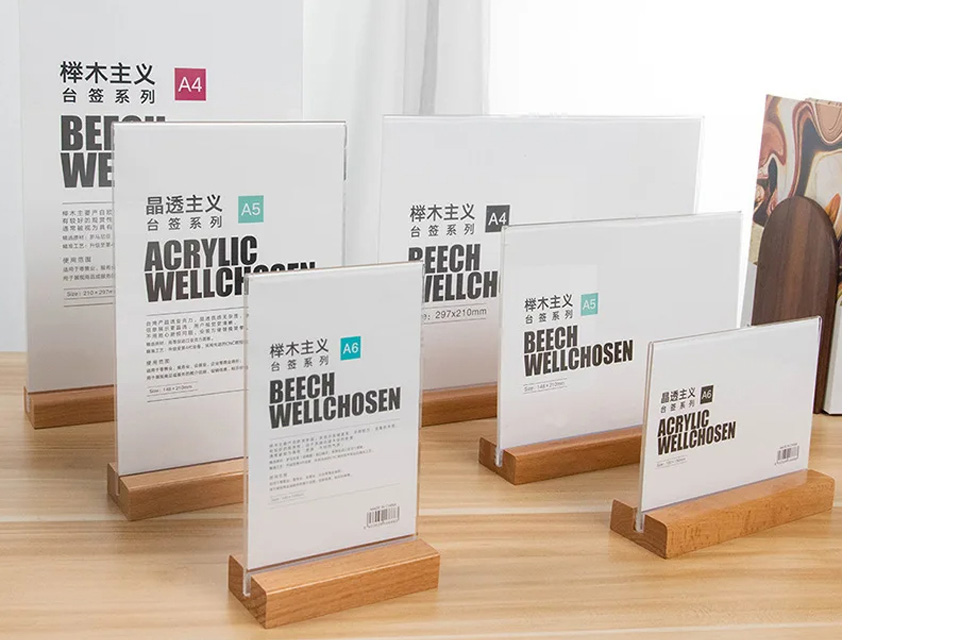
Case Studies
Retail Environments
A prominent example of effective acrylic display case usage can be seen in jewelry stores, where items such as rings and necklaces are secured within glass or acrylic cases to deter theft while highlighting their value. These cases not only protect the items but also enhance customer engagement by allowing them to view the products from multiple angles without risk of damage or loss. Retailers often customize these displays with various finishes and lighting options to create an inviting atmosphere that encourages purchases.
Food and Beverage Sector
In the food industry, acrylic display cases serve dual purposes of product showcasing and health compliance. For instance, cannabis dispensaries utilize acrylic cases that strike a balance between visibility and security, allowing customers to engage with the products while preventing theft. Similarly, cafes and restaurants incorporate acrylic sneeze guards in their displays, enhancing safety while maintaining a stylish appearance, demonstrating how acrylic can merge functionality with aesthetic appeal.
Educational Institutions
Schools utilize display cases not only for security but also to celebrate student achievements and foster a sense of pride. These cases can showcase trophies, awards, or student artwork, transforming hallways into galleries of success and encouraging a positive school culture. The thoughtful arrangement and design of these displays contribute to a vibrant and engaging educational environment, enhancing the overall experience for students and visitors alike.
Corporate Spaces
In corporate environments, custom acrylic solutions such as nameplates and award displays contribute to a professional atmosphere while also celebrating achievements. By integrating branding elements into these displays, companies can create a cohesive look that enhances their corporate identity and reinforces company values among employees and visitors. The use of high-quality acrylic not only elevates the visual appeal but also instills a sense of trust and quality associated with the brand.
Event Spaces
Acrylic display solutions have also gained traction in event management, where they are used for both aesthetic and practical purposes. For example, at trade shows, acrylic display stands allow exhibitors to present their products in a clean and modern manner, while custom branding ensures a lasting impression on attendees. By leveraging the versatility of acrylic, event organizers can create dynamic and engaging spaces that draw in visitors and enhance brand recognition.
Through these case studies, it is evident that acrylic retail fixtures are not merely functional but play a crucial role in shaping customer perceptions, enhancing brand identities, and creating memorable experiences across various environments.
Challenges and Limitations
Measuring Return on Investment
Investing in custom fixture programs presents challenges, particularly in measuring the return on investment (ROI). Retailers often find it difficult to quantify the direct impact of a display, as success metrics can vary widely. Defining specific goals prior to implementation—such as increasing sales of a particular item by 15% or introducing a new product to a target number of shoppers—can help. By setting these benchmarks, retailers can analyze data like product sales, customer traffic, and social media engagement to evaluate performance effectively.
Compliance with Regulations
Adhering to store and local regulations is another significant challenge for retailers, especially for national and regional chains that prioritize consistency. Local guidelines regarding aisle width, accessibility, and fire safety can differ, causing displays that work in one location to potentially violate rules in another. Failure to comply can result in displays being removed, leading to wasted resources. Partnering with experienced project management teams can alleviate these complexities, ensuring that every fixture complies with store-specific and local regulations.
Cost Considerations
The cost of custom retail display cases can be influenced by multiple factors, including materials, size, and design complexity. Larger displays typically require more materials and labor, which increases costs. Similarly, intricate designs necessitating specialized engineering contribute to a higher price tag. While it may be tempting to opt for cheaper options, poor-quality displays can lead to higher expenses over time due to replacements and maintenance issues. Therefore, investing in quality craftsmanship and robust materials can ultimately save costs by reducing the need for frequent replacements.
Supply Chain Disruptions
The retail fixtures industry has been grappling with significant supply chain disruptions, which can hinder timely access to materials and drive up shipping costs. Smaller businesses often face the greatest difficulties, as they may lack the resources to navigate these challenges effectively. Companies are exploring alternative suppliers and sourcing materials locally, but these adjustments take time and may delay new design implementations.
Maintenance and Durability Issues
Maintenance and durability are critical aspects of retail fixtures that can pose challenges. Inadequate material selection can lead to weak fixtures that deteriorate quickly, compromising the store’s appearance and safety. Regular maintenance is essential to prevent minor issues from escalating into major problems. Retailers should consider materials that are easy to maintain, such as stainless steel or laminated surfaces, and implement a routine maintenance schedule to ensure fixtures remain in optimal condition.
Space Utilization
Efficient use of available space is crucial in retail design, yet many fixtures fail to maximize this potential. Poorly designed displays can create clutter and make it difficult for customers to navigate the store, ultimately driving away business. Strategic design choices, such as considering layout and minimizing dust accumulation, can enhance space utilization and improve the overall shopping experience.
Future Outlook
As we look ahead to 2025, several key trends are anticipated to shape the design and functionality of acrylic retail fixtures. Central to these developments is the growing emphasis on creating a positive customer experience. Modern retail displays are increasingly focused on integrating entertainment elements, such as interactive games and live demonstrations, to engage shoppers more effectively. This shift aims to enhance the overall shopping experience, making it both enjoyable and memorable, while bridging the gap between physical and digital retail environments.
Sustainability as a Core Principle
Sustainability will continue to dominate retail fixture design, as eco-conscious practices become essential rather than optional. The demand for fixtures made from recycled and renewable materials, such as bamboo and bioplastics, is expected to rise significantly. Retailers are not only adopting sustainable materials but are also implementing waste reduction practices within their manufacturing processes. This trend aligns with consumers’ increasing preference for environmentally friendly products and their growing awareness of the need to reduce carbon footprints.
Technological Integration
Technology will remain a crucial component of retail fixture design. As retailers seek to enhance customer engagement, the incorporation of advanced technologies—like digital signage and augmented reality—will become more prevalent. These innovations aim to create seamless shopping experiences and improve operational efficiency, positioning retailers to remain competitive in a rapidly evolving market. Retailers are encouraged to view their store layouts as dynamic environments that require continuous optimization based on customer feedback and data analysis.
Inclusive Design Approaches
Future designs of acrylic fixtures will likely reflect a commitment to inclusivity. This includes creating adaptive displays that cater to diverse customer needs, such as wheelchair accessibility and multilingual interfaces. By fostering inclusive retail spaces, brands can ensure that all customers feel valued and welcomed, further enhancing the shopping experience.





